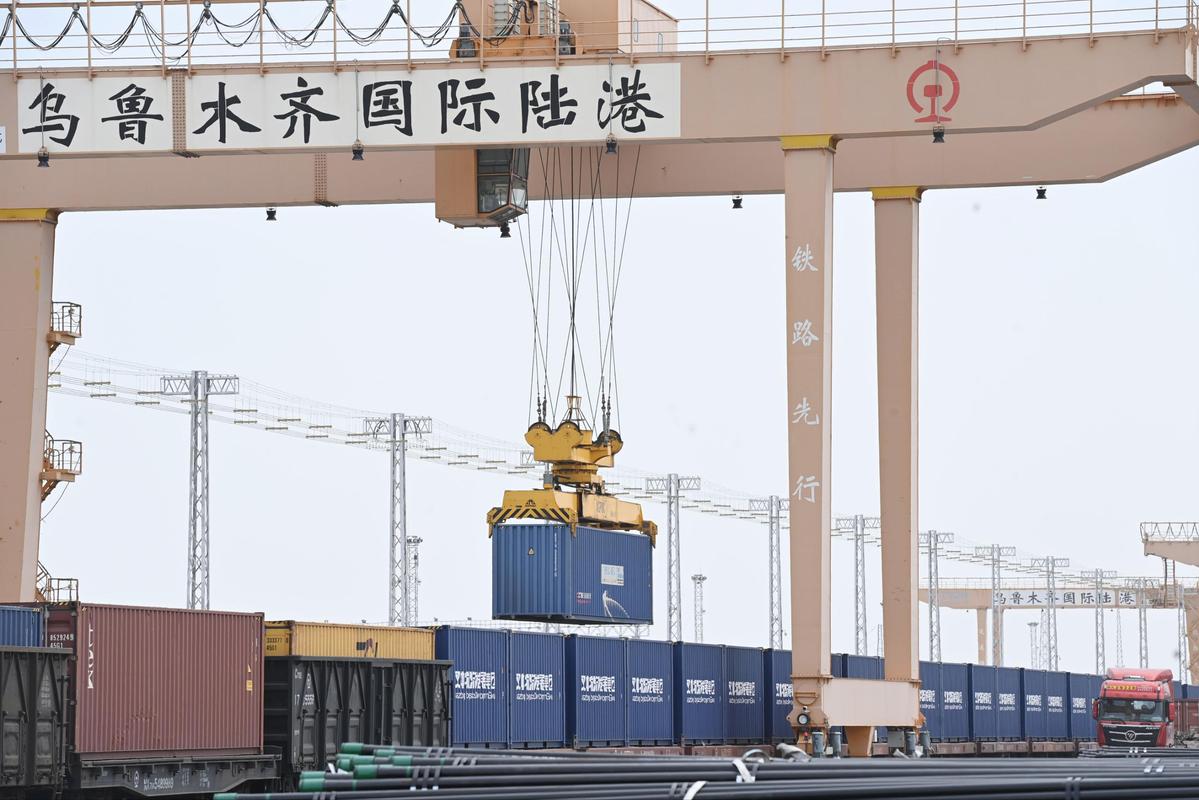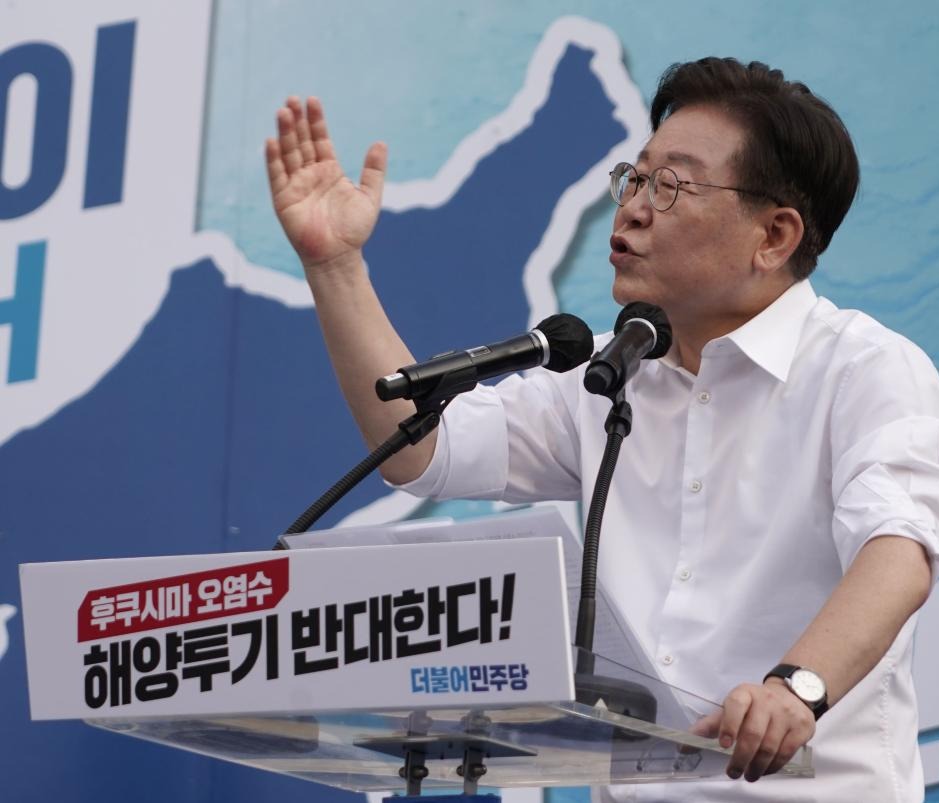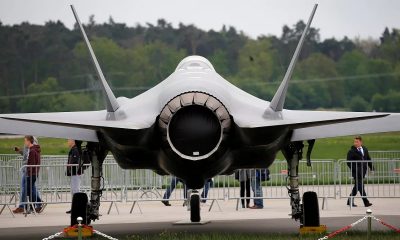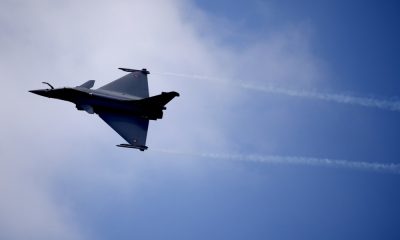ASIA
Xinjiang breakthrough in China’s opening up

Prof. Xu Jianying, senior research-fellow of Institute of China’s Borderlands, CASS talked to Harici: “Both Chinese central government and the local government have made great efforts to open Xinjiang to the outside.”
Beijing aims for Xinjiang Uyghur Autonomous Region to become one of the important centers of China’s outward opening-up. As one of the prominent pillars of the Belt and Road Initiative, the commercial potential of Xinjiang, especially the southern border, has started to be evaluated.
On 1st November of last year, the Pilot Free Trade Zone (FTZ) was established, covering 179.66 square kilometers and comprising three sub-zones in Kashgar province, Urumqi and Horgos. In 2023, the new FTZ has shown good import and export performance, attracting the attention of the business community.
For example, on November 11, the Kashgar zone of the FTZ became operational and trade in the province grew rapidly in 2023. From January to November, imports and exports rose 80.8% year-on-year to 77.15 billion yuan ($10.87 billion), according to data from Kashgar Customs. The province contributed 24.1 percent to Xinjiang’s total foreign trade. Kashgar also has trade links with 128 countries and regions, 90 percent of which are part of the Belt and Road Initiative. It could take up to five years for Xinjiang to officially become a free trade zone.
China is also building new highways that will strengthen the region’s links with Central Asia. One of these projects is the Tianshan Shengli tunnel, the longest road tunnel in the world by today’s standards, which will cross the Tianshan Mountains and “open new routes” for exchanges between Xinjiang Uygur Autonomous Region and Central Asia, which experts say is an increasingly decisive area for foreign trade.
Scheduled to open in 2025, the tunnel will serve as a crucial transportation link between the southern and northern halves of the region, allowing Xinjiang to establish wider connections with Central Asia.

We spoke to Prof. Xu Jianying, senior research-fellow of Institute of China’s Borderlands, CASS about Beijing’s efforts to open Xinjiang to the outside world:
According to Prof. Xu Jianying, both the Chinese central government and the local government of Xinjiang have made great efforts to open Xinjiang to the outside world and have carried out sustained and long-term efforts. The first step was the opening of the port, Prof. Xu said, noting that Xinjiang has gradually opened many ports and has 17 ports open to the outside world so far. He also said that Xinjiang has ports with six neighboring countries other than India and Afghanistan, “For example, there is the famous Hongqirapu Port with Pakistan. Among the 17 ports opened, there are 15 land border ports and 2 air ports.”
Pointing out that the second step is to restart the economic zone, Prof. Xu said, “In 2010, two economic development zones were established in Xinjiang, one is Khorgos Economic Development Zone and the other is Kashi Economic Development Zone. These two zones are also important bases for Xinjiang to open up to the outside world.”
Stating that the third step is the establishment of a free trade zone, Prof. Xu said, “The Chinese government announced that a free trade zone will be built in Xinjiang covering three cities, Urumqi, Kashi and Khorgos. This is an important policy that shows the further development of Xinjiang’s opening to the outside world.”
In addition to the above-mentioned policies, the central government has made significant efforts in many other areas in Xinjiang, Prof. Xu pointed out, stressing that infrastructure construction in the region is developing rapidly. In terms of transportation construction, Xinjiang’s railways, highways, high-speed railways and aviation network are now well-developed and all connected with neighboring countries, he noted.
In addition, Prof. Xu reminded that the Belt and Road Initiative has six economic corridors, four of which pass through or are closely related to Xinjiang, including the China-Pakistan Economic Corridor, the China-Central Asia-West Asia Economic Corridor, the New Eurasia Corridor and the China-Mongolia-Russia Economic Corridor, showing that Xinjiang has become a very important frontier for China’s opening up.
Prof. Xu Jianying also noted that the central government regulates the Xinjiang local government’s foreign development and opening up in accordance with its own pace of development and opening up.
ASIA
Xi urges global CEOs to safeguard trade and supply chains

Chinese President Xi Jinping, in a meeting with a group of executives including Rajesh Subramaniam from FedEx and Bill Winters from Standard Chartered, called on global business leaders to work together to protect supply chains.
Amid a deepening trade war with the US, the Chinese leader told the group of foreign business leaders, including Pascal Soriot from AstraZeneca and Miguel Ángel López Borrego from Thyssenkrupp, that they should resist behaviors that “turn back” history.
Speaking at the meeting held in Beijing on Friday, Xi said, “We hope everyone will have a broad and long-term perspective and not blindly follow actions that disrupt the security and stability of global industrial and supply chains, but instead add more positive energy and certainty to global development.”
The event at the Great Hall of the People marked the second consecutive year that Xi held a carefully arranged meeting with foreign CEOs in the Chinese capital. Last year’s event involved only US business leaders.
The meeting took place at the end of a busy week for Chinese policymakers, who are striving to strengthen relations with the international business community amid rising tensions with the administration of US President Donald Trump.
China’s leading annual CEO conference, the China Development Forum, was held earlier this week in Beijing, followed by the Boao Forum for Asia on the tropical resort island of Hainan.
Beijing is trying to present itself as a bastion of stability in global trade, in contrast to the US, where Trump has launched successive waves of tariffs on many products, from aluminum to automobiles.
Trump pledged on April 2 to impose broad and reciprocal taxes on US trade partners.
ASIA
Trump’s potential auto tariffs worry Japan and South Korea

Following US President Donald Trump’s announcement that he would impose a 25% tariff on imported cars and auto parts, Japan’s Prime Minister sounded the alarm on Thursday.
Prime Minister Shigeru Ishiba told lawmakers during a parliamentary session, “We need to consider appropriate responses,” adding, “All options will be on the table.”
This move, seen as undermining a bilateral agreement made between Trump and then-Prime Minister Shinzo Abe in September 2019, came as a surprise to Japan. This limited trade deal had opened Japan’s market to more American agricultural products. The agreement states that the two countries “will refrain from taking measures contrary to the spirit of these agreements.”
Japanese automakers reacted cautiously to the announcement. Toyota, Subaru, Mazda, and Honda issued brief statements saying they were assessing the potential impact.
Imported cars and trucks are currently subject to tariffs of 2.5% and 25%, respectively. When the new tariffs take effect on April 3, these rates will rise to 27.5% and 50%. The 25% tariff will also apply to automotive parts like engines and transmissions, taking effect no later than May 3.
Japan’s Chief Cabinet Secretary Yoshimasa Hayashi said the government intends to negotiate exemptions. Economists say it is unclear how exemptions might be secured, but there are several options.
According to economists, options Japan might consider include voluntary export restraints, a commitment to increase imports of items like natural gas, grain, and meat, and replacing Russian natural gas with gas from the US. In 2023, 8.9% of Japan’s natural gas imports came from Russia, while 7.2% came from the US.
“Japan will likely be looking at all these options,” said Koichi Fujishiro, a senior economist at the Dai-ichi Life Research Institute.
South Korea in a similar situation
South Korea is also expected to seek exemptions. Analysts said that South Korean automaker Hyundai Motor Group’s announcement earlier this week of a $21 billion US investment would help its negotiating position.
Esther Yim, a senior analyst at Samsung Securities, said, “The US has, in principle, applied a 25% tariff on all imported cars,” adding, “Washington can then negotiate with each country, and I think investment can be used as leverage.”
South Korea’s Ministry of Industry pledged an emergency response by April to help the country’s automakers, who are expected to face “significant challenges” when the tariffs take effect.
Over the years, global automakers have shifted to local production to avoid trade friction. According to the Mitsubishi Research Institute, 60% of Japanese cars sold in the US are produced in the US. This figure drops to 40% for Korean cars. For European brands, the rate is as high as 70%.
Although Ishiba insists all options are on the table, few analysts expect Japan to resort to retaliatory measures, at least at this point. “Japan would gain very little by retaliating against US tariffs,” Fujishiro said.
At a summit with Trump in February, Ishiba pointed out that Japan is the largest investor in the US and a significant job creator, promising to work towards increasing Japan’s investment balance from $783.3 billion in 2023 to $1 trillion.
Cars, Japan’s largest export item to the US, are worth 6 trillion yen ($40 billion) and will account for 28% of Japan’s total exports in 2024. This amount is equivalent to 1% of Japan’s nominal gross domestic product.
Takahide Kiuchi from the Nomura Research Institute estimates that a 25% tariff would reduce Japan’s car exports to the US by 15% to 20% and lower Japan’s GDP by 0.2%.
If Japanese automakers try to respond by shifting production to the US, this would reduce domestic employment and hollow out the country’s economy in the long run.
Masanori Katayama, chairman of the Japan Automobile Manufacturers Association, said at a press conference last week, “Car exports from Japan are necessary to supplement the domestic production of Japanese automakers and to provide a lineup of attractive cars… to meet the diverse needs of American customers through car dealerships in every US state.”
Katayama said that when the US implements the tariff, “a significant production adjustment is expected. The Japanese auto industry consists not only of automakers but also parts suppliers and employs 5.5 million people.”
Katayama insisted that the industry and the Japanese government must come together to take action and keep domestic supply chains intact.
The tariffs are also expected to harm American automakers because they too source parts and manufacture globally to keep costs down and make their cars competitive in the market.
Nomura analyst Anindya Das said General Motors could fall into an operating loss on an annual basis due to its reliance on factories in Mexico. He added that Toyota could also see a 30% drop in operating profit.
Jennifer Safavian, president and CEO of Autos Drive America, an industry group representing international automakers operating in the US, including Toyota, Honda, Nissan, and others, said, “Tariffs imposed today will make it more expensive to produce and sell cars in the US, ultimately leading to higher prices, fewer choices for consumers, and fewer manufacturing jobs in the US.”
ASIA
South Korean opposition leader Lee Jae-myung acquitted in election law case

A court in South Korea on Wednesday overturned a lower court’s decision, ruling that the main opposition party leader is not guilty of violating election law. If this decision is upheld, it will pave the way for him to run in the next presidential election.
Prosecutors can appeal the decision, which could take the case to the Supreme Court, South Korea’s highest judicial body.
Speaking outside the court after the ruling was announced, Lee Jae-myung thanked the court for the decision, which he described as “the right decision.”
The charges against Lee stem from remarks he made in 2021 while competing in his party’s presidential primary, where he allegedly denied knowing one of the key figures in a real estate development scandal. The scandal involved a redevelopment project in Seongnam city, where Lee was mayor. Prosecutors allege Lee lied about his relationship with businessman Kim Moon-ki to conceal his own culpability in the real estate deal.
Immediately after the court’s decision was announced, Kweon Seong-dong, leader of the ruling People Power Party, called the ruling “regrettable” and urged the Supreme Court to quickly decide the case.
Lee, a trained lawyer and experienced politician, lost the 2022 presidential election by the narrowest margin in South Korea’s democratic history to now-impeached President Yoon Suk Yeol.
Yoon, Lee’s fierce rival, is awaiting a Constitutional Court ruling on his impeachment over charges of leading an insurrection in December. Lawmakers voted to impeach Yoon following his attempt to declare martial law in early December, which he claimed was necessary to protect South Korea from opposition “anti-state forces.” The measure was quickly rejected in the National Assembly, but the attempt triggered a political crisis that continues months later.
The Constitutional Court completed hearings on Yoon’s case late last month and is expected to deliver its verdict within days, although no official date has been announced. If the court finds Yoon not guilty, he will be immediately reinstated. If found guilty, an early election will be held within 60 days.
Data released last week by polling firm Gallup Korea showed Lee as the leading choice among potential candidates for the next presidential election. Lee, with a support rate of 36%, was far ahead of the number 2 likely candidate, conservative Labor Minister Kim Moon-soo.
Yoon’s impeachment delay: Legal rigour or political deadlock?
-

 EUROPE5 days ago
EUROPE5 days agoF-35 debate intensifies across Germany and Europe
-

 EUROPE1 week ago
EUROPE1 week agoEurope plans for US absence in NATO with 5-10 year strategy
-

 ASIA2 weeks ago
ASIA2 weeks agoChina’s AsiaInfo expands with DeepSeek-powered AI
-

 EUROPE2 weeks ago
EUROPE2 weeks agoFrench defense industry gears up for war amid EU strategic autonomy push
-

 AMERICA2 weeks ago
AMERICA2 weeks agoTrump’s tariffs drive Nvidia to invest heavily in US manufacturing
-

 DIPLOMACY6 days ago
DIPLOMACY6 days agoTrump’s proposed fees on Chinese ships threaten US maritime industry
-

 DIPLOMACY2 weeks ago
DIPLOMACY2 weeks agoUS, Britain, and Türkiye excluded from EU armament fund
-

 ASIA1 week ago
ASIA1 week agoIndia shelves $23 billion plan to rival China’s factories















